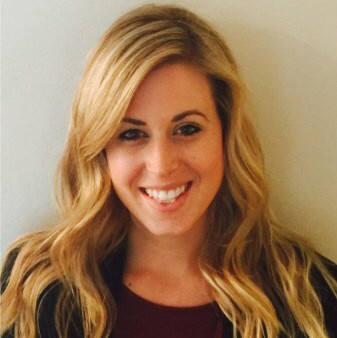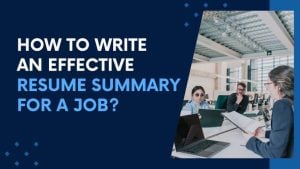How to Use Storytelling in Crafting a Compelling Resume Narrative
 Publié le 7 May 2024
Publié le 7 May 2024
Make sure that your application stands out from the rest by knowing how to use storytelling in crafting a compelling resume narrative.
A resume is the tool you use to connect with future employers, and to showcase who you are as an employee. But what about people who just can’t connect with the format of a resume?
This is where a strong resume narrative can really shine.
We’ll discuss exactly what narrative resumes are, and how to use storytelling to craft your own resume narrative perfectly every time.
What is a Resume Narrative?
Narrative or storytelling resumes are all about drawing recruiters in with the story of you. They involve showcasing your experience, skills, and qualifications in the format of a narrative, as opposed to the more traditional approach of creating sections.
These resumes should include descriptions and short paragraphs more than lists.
These resumes are popular as well. According to a 2022 report by LinkedIn, nearly three-quarters of hiring managers look for candidates who have a well-written skills and career summary in their resume – which a compelling narrative resume should always have.
Elements of a Strong Resume Narrative
So, how do you take the key storytelling elements and use them as an approach to finding a new role for yourself?
Knowing how to use storytelling in crafting a compelling resume narrative includes all of the following features, among others.
A Compelling Story
First and foremost, you’ve got to include an interesting and engaging story element. This includes explaining your career story, as well as covering your skills and knowledge in a narrative format.
For example, you might explore your deep understanding of a payroll process by discussing a complicated case and how you resolved it to everyone’s satisfaction. You could also talk about how you acquired and practiced the skills needed for that process.
Free to use image sourced from Pexels`
Personal Branding
Resume narratives should always showcase your personal story and value as an employee. If you’re all about making detailed business plans that turn conventional planning strategies upside down, lean into this and brand yourself as a planning expert with bright new ideas.
You can also use this as an opportunity to boost your career reinvention process. Since you can choose to brand yourself as you see fit, your personal branding can and should reflect your goals, dreams, and aspirations–even if these don’t align with your career history.
Your Career Biography
Speaking of your career trajectory, it’s important to give an account of what that’s looked like up to now. Anyone who reads your biography should come away knowing what your experience looks like, where your skills lie, and perhaps most importantly, who you are.
Remember that your biography is more than a laundry list. Instead of just saying, “I did X, Y, and Z,” you’re looking to craft a story around your employment history.
Storytelling Techniques to Employ
If you’re going to create a resume centered around the idea of telling a story, you’ll have to take the best things storytelling has to offer on board with you.
Here are three of those key techniques.
Catchy Hooks
Novelists know the importance of an amazing first sentence. Readers should be desperately curious about the full story from that point onwards, according to Lisa Cron, author of Wired for Story – and the same principle should apply to your resume.
When recruiters start reading your resume, you want them to be unable to put it down.
Free to use image sourced from Pexels
Variety
They say it’s the spice of life–and for good reason. You won’t find many compelling examples of stories that only use one type of sentence structure, or that are otherwise monotonous.
Change things up.
You’ll want to experiment with different sentence structures, just as you should aim to showcase all your skills, not just the top three you think employers will like. You never know what senior reporters could do with line editors who also know how to use tools like Excel, for example.
Word Choice
According to linguist Anna Marie Trester, part of the appeal of a narrative resume is the fact that it lets jobseekers make careful and deliberate choices to create their own personal brand identity.
This comes down largely to word choice.
For example, you can say that you’re ‘good’ at a skill, or you can use ‘proficient’ instead. You could be a ‘nice’ person, or a ‘sociable and open-minded’ one. In this way, you can shape your narrative to really reflect who you are using the specific words you opt for.
Best Practices for Helping Your Resume Narrative Stand Out
If one of your career resolutions this year is to find a new role that suits you well and gets you closer to your dream job, you can’t have a good narrative resume. You need an amazing one.
Here’s how you can help make that happen.
Know What to Do with a Bullet Point
It’s a wonderful thing for you to know everything about industry-standard HR tools, but hiring managers aren’t usually looking for a long, detailed paragraph that goes on about these sorts of topics. Instead, consider using a bullet point list.
Your goal shouldn’t be to just have a bunch of bullet points, but rather to use them well. Choose carefully each time to show you know when to use a concise bullet, and when to opt for a more detailed bullet–and that you can bring the information across in the right way every time.
Free to use image sourced from Pexels
Think Beyond Your Most Relevant Skills
It’s absolutely crucial to include your key skills, we’re not denying that. But a narrative resume is more than a list of the top qualifications you’ve got for a role.
Rather, it’s the perfect place to show off your full range of skills.
If you’re a highly organized person, you can both tell readers this and show it off visually in the layout and design of your narrative CV. Likewise, you can demonstrate your creativity or strong grammar skills naturally with this format.
This is just as important as explaining which hard skills you’ve got. For example, if your career path has involved working with call center scripting software to create the best possible experience for customers phoning businesses, that information also has a place in your narrative resume.
In other words, think beyond the job description and highlight all your best skills, not just the ones the recruiters are directly asking for.
Balance Storytelling and Self-Promotion
As any resume-writing expert can tell you, it’s challenging to find the right balance between under- and overselling yourself on a resume. You don’t want to lie or exaggerate, just as you want to avoid coming across as meek or unimpressed with your own skills.
In the specific context of resume narratives, you’ve also got to create a healthy mix between showing off your hard and soft skills, and telling your story.
For example, you might be highly skilled at creating cafeteria plans. To both show and tell your readers this, you’ll want to give examples of the best plans you made and the impact they had, so you’re self-promoting authentically.
Give the Term ‘Relevant Experience’ a Broad Scope
Your experience for a great role may well range beyond your professional experience.
For example, let’s say you used to dabble in web development. Even if you haven’t worked with top level domains in some time, it’s still a good idea to bring this up because it shows how versatile you are as an employee and as a person.
The big advantage of a narrative resume is that it doesn’t constrain you to only the most strictly relevant snippets of information. Make sure you use this fact to your advantage.
Learn From the Traditional Resume
Just because you’re not writing one doesn’t mean a traditional resume holds no value for you.
The job market is highly competitive at the moment, that much is no secret. With less than 5% of CVs resulting in a job interview, it’s crucial to learn from what those few people are doing right, and how you can take their lessons on board for yourself when crafting a compelling resume narrative.
Image sourced from standout-cv.com
For example, let’s say you want to apply for a job in an insurance company. A traditional CV might include a section detailing your relevant knowledge and expertise, so your narrative resume can then include a line that reads: “Answering questions like ‘what is OASDI’ is second nature to me”.
This way, you’re still highlighting key elements that a traditional CV emphasizes, just in a more narrative manner.
Read Each Job Description Very Closely
In addition to researching a company before you apply there, you’ve got to take a close look at every job description and make sure it fits in with your narrative.
If you’re focusing on creating a career of growth, then hiring managers will have a hard time seeing how a job at a lower or similar level to your current one fits in with your narrative. Likewise, if you’re aiming for slow and steady progress, this won’t match with a job that comes with lots more responsibility than the one you’re already doing.
Final Thoughts
A compelling resume narrative should be like a very good book: difficult to put down, captivating, and persuasive. That’s why using storytelling is such a good idea for these types of resumes.
You can think of a narrative resume as a space for you to create a strong story with specific constraints, such as length and format. You can also think of it as your chance to present yourself to future employers in a compelling and less common way.
All in all, knowing how to use storytelling in crafting a compelling resume narrative will boost your chances of standing out in the job search and find your next career opportunity.







